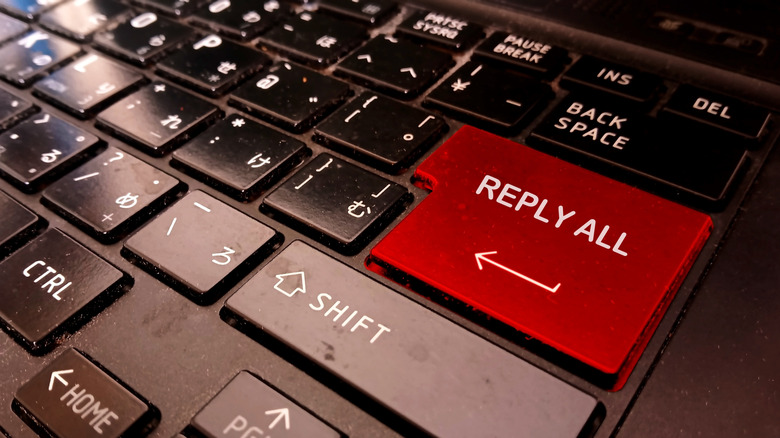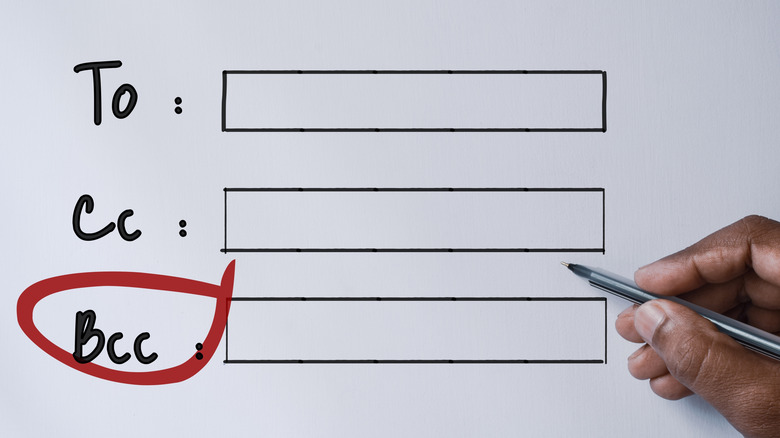What Happens If You 'Reply All' To A BCC Email?
For as long as the English language has existed, concerned elders have pontificated on the keys to social etiquette, with some combination of "stand up straight," "give a firm handshake," and "maintain eye contact" being driven into the next generation's heads at every opportunity. But in today's internet-driven landscape, even these long-held norms of social etiquette have evolved, and there's a new sheriff in the town of social niceties: email protocols. Everyone has been there: the dreaded mass email.
With reams of responses cluttering a mailbox, "reply all" email chains are the bane of many users' existence. One writer, who shall not be named, is infamous in the greater Los Angeles area for orchestrating one of the worst reply-all emails known to man, sending his father's entire contacts list a YouTube video titled "Daft Hands" and eliciting a years-long chain commenting on the then-12-year-old's 'precious' love for Daft Punk-inspired finger choreography. While Slack and similar applications have lessened the weight of burdensome email threads, sometimes they are an unfortunate social and workplace necessity.
Even more dreadful than hitting reply all, however, is doing so when you are not the primary recipient. Blind Carbon Copy, or BCC, allows users to send recipients the same email while protecting their respective email addresses, and is used for everything from distributing newsletters to party invitations. So what happens when you hit 'reply all' to a BCC email? Luckily, it won't cause you to commit the ultimate faux pas by starting the email chain from hell and result in your friends and family looking to block you on their Gmail.
Blind Carbon Copy
BCC harkens back to the earliest days of email, when the Advanced Research Projects Agency Committee (ARPA) at the Department of Defense set out its 1977 standards for Network Text Messages — establishing a common format for email providers to organize their users' messages. Since then, BCC emails have evolved into a key component of mass email campaigns, ideal for emails with large lists of recipients. In contrast, Carbon Copy (CC) emails are used whenever a sender wants additional persons to be aware of an email's contents without being the primary recipient. CCs are useful for informing additional members of a group of interactions that may indirectly concern them, while ensuring transparency and enabling input from all relevant parties. CCs are great for disseminating company policies and organizing communal events.
One key difference between these messaging options is their treatment of the Reply All function. In CC emails, all recipients can reply to the full email chain. BCC emails, on the other hand, stop unwanted email chains by preventing responses from being sent to other BCC recipients. Instead, a user's Reply All message will be sent only to the original sender and any recipients in the To and CC fields. The sender's response will also announce their BCC status, known to said recipients.
In this way, senders can interact with an email thread without unnecessarily cluttering the inboxes of irrelevant recipients. For instance, a recipient of a weekly newsletter can contact the provider to inquire about a promotion without informing the rest of the subscriber list. This is a major bonus for anyone whose main intention wasn't to solicit a spike in users searching, "How to unsubscribe from an email in Gmail?"

